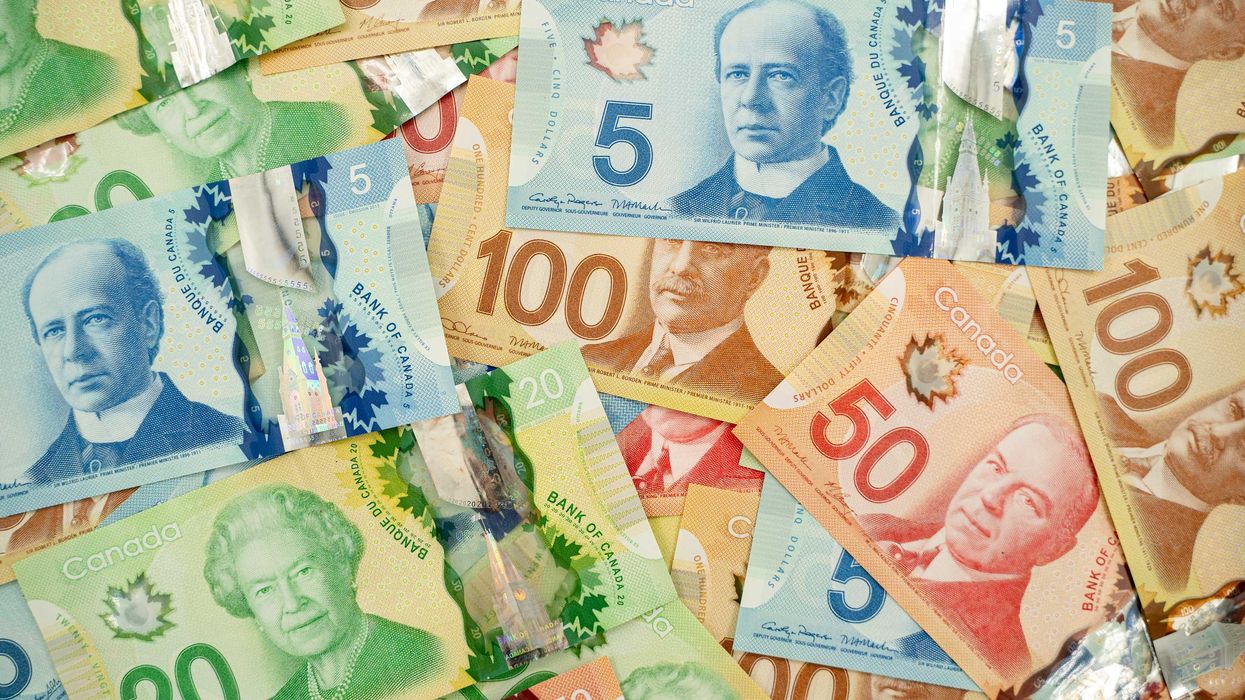Minimum wage just went up across Canada — but one province got left out
There's only one province that hasn't raised its minimum wage in 2025. 😬

Five provinces just raised their minimum wages as of today, October 1.
Workers in several provinces are officially earning more per hour starting today, thanks to a fresh wave of minimum wage hikes that just came into effect.
The raises, which kicked in on October 1, apply in multiple parts of Canada, and they join a long list of provinces and territories that have raised minimum wage in 2025 so far — with just one province still holding out.
Whether you're flipping burgers, stocking shelves or making lattes, these minimum wage increases could mean hundreds of dollars more per year in take-home pay for full-time workers.
Who gets a raise as of October 1?
Five provinces increased their minimum wages today, continuing the trend of annual wage bumps that aim to keep up with inflation and rising costs across Canada.
Here's a look at what's new:
- Saskatchewan — $15.35/hour (up from $15.00)
- Manitoba — $16.00/hour (up from $15.80)
- P.E.I. — $16.50/hour (up from $16.00)
- Nova Scotia — $16.50/hour (up from $15.70)
- Ontario — $17.60/hour (up from $17.20)
For someone working 40 hours a week, these raises could mean an extra $400 to over $1,600 per year before taxes. Nova Scotia's increase is the biggest of the bunch, adding $0.80 an hour, or around $32 a week.
Alberta's minimum wage is officially the lowest in Canada
Today's updates push Alberta to the bottom of the pack when it comes to minimum wage in Canada. Its rate has been frozen for seven years straight now, remaining at $15.00/hour since October 1, 2018.
Back then, it was the highest in the country, championed by the province's then-NDP government. But since the United Conservative Party took over in 2019, there hasn't been a single increase. In fact, just months after that election, the UCP cut the minimum wage for students under 18 down to $13/hour, where it also still sits today.
That makes Alberta one of only two provinces with a lower wage for students (the other is Ontario, but the gap there is much smaller, with the new student wage is $16.60 effective today).
Despite calls from Alberta's opposition NDP to raise the wage and tie it to inflation, Premier Danielle Smith has so far refused, citing high youth unemployment and calling any potential wage hike a "[barrier] to employers hiring young people," the Canadian Press reports.
Smith reportedly told reporters on Tuesday that increasing the minimum wage wouldn't help address high youth unemployment, saying, "We're going to see if we can start seeing those numbers go down and then we can have further conversations."
Earlier increases you might've missed
These October 1 hikes wrap up a wave of increases that started earlier this year. Here's a quick refresher on where other provinces and territories currently stand:
- Federal (for the federal public service and federally regulated industries) — $17.75/hour since April 1
- New Brunswick — $15.65/hour since April 1
- Newfoundland and Labrador — $16.00/hour since April 1
- Nova Scotia — previously increased from $15.20 to $15.70/hour on April 1
- Yukon — $17.94/hour since April 1
- Quebec — $16.10/hour since May 1
- B.C. — $17.85/hour since June 1
- Northwest Territories — $16.95/hour since September 1
- Nunavut — $19.75/hour since September 1 (highest in Canada)
What do these raises mean for workers?
Let's break it down. A 50-cent raise might not sound like much, but for a full-time worker putting in 40 hours a week, that's about $1,040 more per year. Even a smaller bump of 20 cents an hour adds up to over $400 annually — enough to make a difference with bills, groceries or even just a few extra treats.
Looking at today's biggest increase — 80 cents in Nova Scotia — that adds up to $1,664 more a year, before taxes and other deductions.
Most of these changes are tied to consumer price index data or average hourly wages, but some provinces, like Nova Scotia and P.E.I., have mapped out multi-year plans with regular scheduled increases.
What's next?
If you're working a minimum wage job, you should start seeing the new rate on your pay stub for any hours you work from October 1 onward. If not, it might be time to check in with your employer — the changes are official as of today.
Meanwhile, all eyes are on Alberta to see if it will ever catch up. Until then, it remains the only province in Canada without a minimum wage increase in 2025.
AI tools may have been used to support the creation or distribution of this content; however, it has been carefully edited and fact-checked by a member of Narcity's Editorial team. For more information on our use of AI, please visit our Editorial Standards page.
- More people are leaving Ontario than anywhere else in Canada and here's where they're going ›
- Canada's highest-paying job fields were revealed and #1 isn't medicine, law or engineering ›
- Canada's minimum wage is one of the best in the world and worth more than double the US wage ›
- Government jobs in Canada pay more than private ones and the gap is even bigger than you think - Narcity ›
- These are Ontario's highest-paying job fields right now and #1 isn't finance, law or medicine - Narcity ›
- Here's what an 'average' salary looks like in every Canadian province right now - Narcity ›
